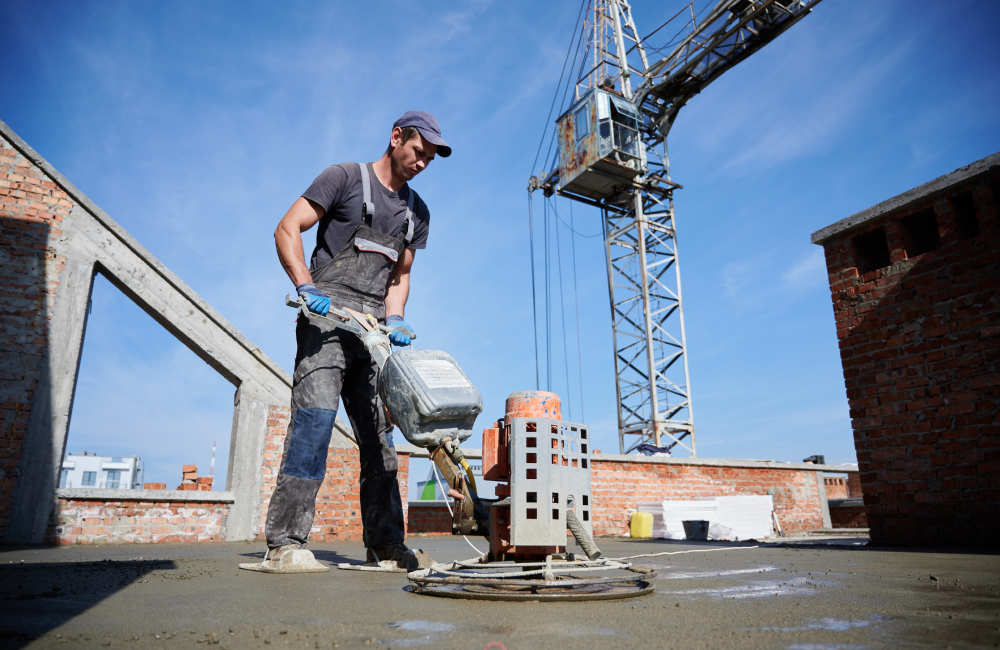Homeowner Associations
Homeowner Associations (“HOA”)
Revamp Your HOA’s Infrastructure with Polyurethane Foam – A Cost-effective, Non-invasive, and Versatile Solutions for Your Common Area Repairs!
PLY offers multiple solutions to the common infrastructure concerns that Homeowner Associations (HOA) face. We understand that keeping up with maintenance and repairs can be challenging and expensive, especially for non-invasive repairs. With our foam solutions, your HOA can now complete repairs quickly, cost-effectively, and with minimal disruption to your community.
Our products are durable and can withstand harsh environmental conditions and heavy traffic, ensuring that your common areas remain safe for years to come. PLY foams can be used in numerous applications including concrete slab lifting, foundation repair, wall repair, parking lots, and bulkheads.






Here are a few quick use cases for HOAs:
- Lifting and leveling of concrete slabs in common areas (such as sidewalks, parking lots, driveways, community parks, and pool decks) will stabilize a concrete structure from continued stress and remove all trip hazards.
- Sealing of cracks in walls and foundations to prevent water infiltration and further damage.
- Filling voids and stabilizing soil around foundations to prevent settling and structural damage.
- Repairing voids and gaps in masonry walls, such as brick or stone, to prevent water infiltration and improve structural integrity.
- Repairing seawalls and bulkheads by injecting Polyurethane foam under and behind the structure – filling all voids, stabilize walls and minimize water erosion issues.
- Stabilizing and repairing damaged riprap structures using Polyurethane foam injection, a cost-effective and non-invasive solution for filling voids caused by erosion and strengthening the structural integrity.
- Depending on the scope and number of identified issues, the majority of the above can be completed within one day. Greatly minimizing the impact on your residents.
Our Solutions Align with a Homeowner Associations Board’s Key Responsibilities
Polyurethane foams can be used to help mitigate several of the key challenges that Homeowner Association Boards are tasked with:
Minimizing Legal Liabilities: A single trip or fall incident in your common area can cause severe injuries and legal liabilities that can hurt your community’s reputation and finances. PLY can help you eliminate these liabilities and create safe and hazard-free common areas for your residents. Our foam injection process can lift and level sunken concrete, such as sidewalks, walkways, and pool decks, thereby eliminating tripping hazards that can cause accidents and lawsuits. This can often be done in a single day, minimizing downtime and disruption to your residents.
Communication: Polyurethane foam can be used to repair common areas such as sidewalks, driveways, and parking lots quickly and effectively. This can improve the appearance and safety of these areas, which can help improve communication and trust between board members and homeowners.
Financial management: Polyurethane foam is a cost-effective material that can be used for a variety of repairs, such as lifting and leveling concrete slabs. By using this material for repairs, HOA boards can save money on more expensive repair methods, which can help improve the association’s financial stability.
Legal compliance: Polyurethane foam can be used for non-invasive repairs, such as sealing cracks in walls and foundations, that do not require excavation or other invasive techniques. This can help the association comply with local laws and regulations that require non-invasive repair methods.
Maintenance and repairs: Polyurethane foam can be used for a variety of repairs, including lifting and leveling concrete slabs, repairing foundation cracks, and sealing leaks in pipes. By using this material, HOA boards can ensure that maintenance and repairs are done quickly and effectively, which can help improve the appearance and safety of the association’s common areas.
Community engagement: By using Polyurethane foam for repairs, HOA boards can improve the appearance and safety of the association’s common areas, which can help engage homeowners and improve their overall satisfaction with the association.
Polyurethane foam can be used to help mitigate some of the concerns that HOA boards face by providing a cost-effective, non-invasive, and versatile material for repairs. By using this material for repairs, HOA boards can improve the appearance and safety of the association’s common areas, which can help improve communication, financial stability, legal compliance, and community engagement.
Ready For Your Next Project?
Our team of Commercial Foam Specialist are available to provide support, review project details and recommend specific solutions. Let us know what your specific situation entails.
HOA Foam Options
Recycled Line
Hydrofoam Line
Specialty Foams
Recent Articles
Why Should You Invest in Professional Concrete Raising Services?
Why is Void Filling Crucial for Maintaining Structural Integrity?
Why is Soil Stabilization Essential for Sustainable and Durable Infrastructure?

